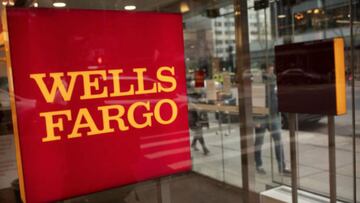What are the biggest US banks by volume of deposits? Are bigger banks better or riskier?
Memories of the deeply traumatic 2008 Financial Crisis are resurfacing after the collapse of SVB. Which banks are safe and how to evaluate risk?

At a minimum, workers should be aware that the federal government, through the Federal Deposit Insurance Corporation (FDIC), ensures up to $250,000 for most checking, savings, or retirement account.
There are just under five thousand banks with more than 81,000 branches where depositors are protected in case a bank collapses. When selecting a bank or opting into a private retirement account like a 401(k) or an IRA, you can ask either bank employees or your employer if up to $250,000 will be insured by the FDIC.
How many banks have failed since 2008?
In a case where a bank does fail, like that of Silicon Valley Bank (SVB) late last week, the FDIC steps in and can either dissolve, sell, or pass along the institution.
According to SPS Global, there have been 538 bank collapses since 2008 —six of which have occurred in the last year. The cases of SVB and Signature Bank, which also failed in recent days, are the second and third largest failures in US history, with the former holding “$209.03 billion in assets and $175.38 billion in deposits” and the latter holding “$110.36 billion in assets and $88.61 billion in deposits as of the end of 2022.”
Aside from raising interest rates, the reasons why SVB suddenly collapse remain to be seen. Economists have pointed to the influence of venture capitalists at the bank who grew worried about SVB’s balance sheet and told companies they had invested in to pull out.
Are bigger banks safer?
At the time of the collapse, SVB was the sixteenth-largest bank in the United States, and it may have only taken a few venture firms to warn companies for the bank run to begin. Compared to the total assets held by the five major banks, SVB’s portfolio will look like small potatoes.
What are the four largest banks in the United States?
| Bank | CEO | Assets | Deposits | Revanue (2022) |
| JP Morgan Chase | Jamie Dimon | $3.66 trillion | $2.462 trillion (2021) | $37.7 billion |
| Bank of America | Brian Moynihan | $2.41 trillion | $1.2 trillion (2021) | $27.5 billion |
| Citigroup | Jane Fraser | $1.77 trillion | $1.4 trillion (2022) | 14.85 billion |
| Wells Fargo | Charles Scharf | $1.72 trillion | $834.7 billion (2021) | $13.2 billion |
| Source: Bankrate | ||||
In the coming weeks, exactly what news investors had that concerned them or what they stood to gain from SVB’s collapse will become more apparent.
“Too big to fail” was the slogan to describe the biggest banks in the US, who, if allowed to fail, could have sent the country into a Depression-like event. That is the opinion of current Secretary of Treasury and former Chair of the Federal Reserve Janet Yellen, who defended the bailing out of banks in an interview with Jon Stewert but had little to say about families and communities far from Wall Street that were left to fend for themselves.
It is estimated that ten million people were forced to leave their homes as a result of the mortgage crisis, and an even greater number lost their jobs. Rates of child poverty today, which stand at around seventeen percent, have not moved much compared to the levels recorded in 2007. The percentage of children who live in poverty has fallen from the high of twenty-three percent recorded in 2011 and 2012.
Are bigger banks “better”?
The question over whether a person’s money will be safer in a small FDIC-insured credit union or a banking giant like JP Morgan Chase (which is also covered by the FDIC) really comes down to their net worth, not the size of the bank. So to say that bigger banks are “better,” one must also ask better for who?
As we have seen in the case of SVB, the very wealthy depositors will be compensated beyond the $250,000 marker that is insured by the FDIC. On the other hand, in 2008, when workers who had been in the labor market for twenty years saw, on average, a quarter of their retirement wiped away, no such compensation was made available.
The difference between a bank like JP Morgan Chase and SVB is that for a bank run to take down the largest bank in the country, far more investors would have to take part. SVB was not “too big to fail,” and even when it collapsed, the federal government was there to ensure depositors received their billions back. If a small commercial bank made up of account holders with much lower incomes and who make smaller campaign contributions would have been in the same position, many doubt that leaders in Washington would have had that political will or interest in protecting the wealth of these depositors. If the 2009 bank bailout is an indicator of future action to support working-class people during times of economic hardship, then the answer would be no.






